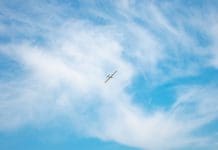This post is also available in:
 עברית (Hebrew)
עברית (Hebrew)
A new sensor technology with potential for application in drones has been inspired by mosquitoes. Some mosquitoes are night owls of the insect world, able to avoid running into walls, even in complete darkness. Now, researchers have figured out how these pesky insects do this, and they’ve used that information to build a sensor that may one day help keep drones, and even helicopters safe.
The team from the University of Leeds and the Royal Veterinary College (RVC) homed in on a unique organ – an array of about 12,000 cells arranged in a circle around the base of each antenna that detects how the antenna wobbles. They called this “aerodynamic imaging”: it gives the mosquito a picture of the world around them even in the dark and when they cannot feel surfaces by physical contact.
The researchers filmed Culex quinquefasciatus, a mosquito that transmits Zika and West Nile viruses, flying at different distances from the ground or a wall. The images helped the group visualize how air moves off the insect’s long, slender wings and how that flow changes as the mosquito moves closer to a surface.
Using computer simulations, inspired by the mosquito’s alert mechanism, the scientists outfitted a palm-size drone with a similar sensor and fitted it with lights that glow when the sensor detected a surface. The resulting “mosquito-copter” is able to detect surfaces all on its own, even in the dark.
The lightweight and energy-efficient sensor — weighing only about 9.2 grams — could help drones fly in the dark, and even work on a full-size helicopter.

























